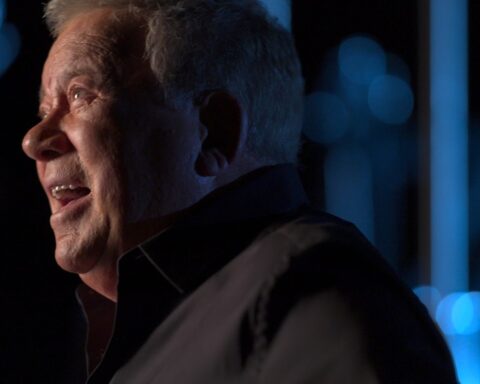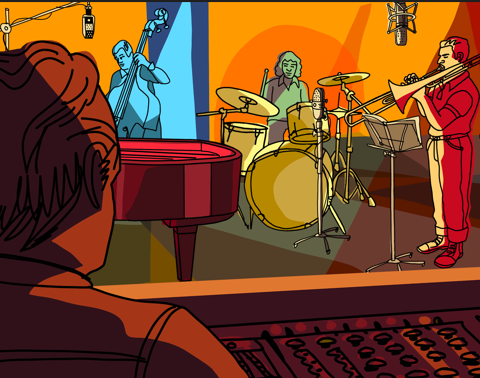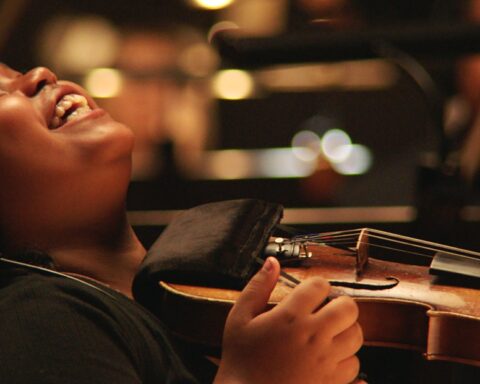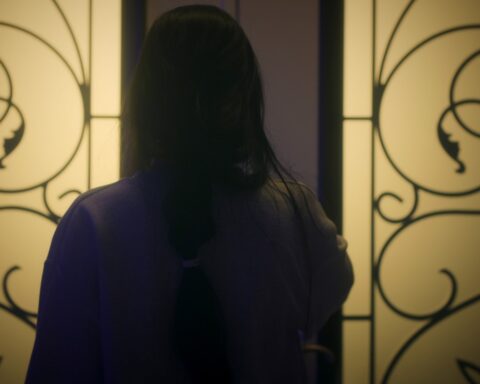Making Waves: The Art of Cinematic Sound
(USA, 94 min.)
Dir. Midge Costin
Since its inception, film has primarily been celebrated as a visual medium. The power of the moving image set it apart as a new art form. Midge Costin’s documentary Making Waves: The Art of Cinematic Sound explores how the history of sound and image evolved together, primarily how modern soundtrack reproduction contributed directly to the rise of auteur-driven cinema in the 1970s, which laid the foundation for modern blockbuster spectacles.
The film focusses on three of the giants of the industry from the last five decades. Walter Murch, whose soundscapes for THX 1138, The Godfather, and Apocalypse Now laid the foundation for modern surround mixes that continue to this day. Ben Burtt was hired by George Lucas after Murch committed to another project with Francis Ford Coppola and subsequently became the definitive sound designer for decades thanks to Star Wars, Raiders of the Lost Ark, and dozens of other projects. Finally, there’s Gary Rydstrom, a student of Burtt’s who helped give voice to Pixar’s CGI creations as well as Spielberg’s many triumphs including the soundscape of Saving Private Ryan.
Lucas, Spielberg, and other A-listers are interviewed for the documentary, which indicates the terrific access that Costin was granted. A slew of modern sound mixers, Foley artists, and other talents appear throughout to contextualize this oft-misunderstood aspect of film production.
One particularly welcome interviewee is Barbra Streisand. The actor/singer/director has been celebrated in numerous ways, but her contribution to the development of theatrical sound reproduction is one of the film’s pleasant surprises. The stories of Lucas using his clout to help theatrical exhibition quality are well known, but to hear from Dolby how Streisand pushed for stereo presentation for 1976’s A Star Is Born — a year before Star Wars’ arrival — proves the icon underappreciated as a formidable director. Moreover, Streisand’s role illustrates how sci-fi and action films aren’t the only works that move the science of cinema forward.
The film focusses as well on what’s dubbed the “circle of talent” in which music, voice (including production recording, dialogue editing, and automated dialogue replacement aka ADR), and sound effects (including SFX, Foley, and ambience) combine to provide the foundation of cinematic sound. Making Waves articulates each role, which offers a boon for viewers who often find themselves confused about these terminologies when the credits roll.
At times, the film tries to do too much. On one level, it offers the history of the technology, but it skips over a number of critical developments, especially recent moves to object-based mixing like Dolby Atmos. As a celebration of artists, it touches upon some of the pioneers, such as RKO’s Murray Spivak, but the film struggles to find anything deeper to say about sound artists outside the triumvirate of Murch/Burtt/Rydstrom. Finally, the process itself is a bit hard to follow for anyone who isn’t versed in the intricacies of ProTools and modern mixing stations – it makes for a pretty show, but the actual hands on work doesn’t get enough attention.
Despite these reservations, Making Waves provides a wonderful celebration of an aspect of cinema that is frequently misunderstood and underappreciated. Many of the touchstone films appear and Costin includes some obscure titles beyond the obvious examples. Costin’s project could serve to be longer, like a multi-episode work where time can be better spent on the nitty gritty (as is done, for example, in the Foley segments). Seeing actual sound designs take place, rather than the waving of knobs and the like, would be beneficial, as would more scene breakdowns that strip the constituent parts of the mix to expose the various elements.
There are worse things than wanting even more from a project, and in the end, Costin’s film effectively articulates the wonders and challenges of bringing sound to cinema. Even as somebody well versed on this period (my fanaticism for Murch, Burtt and Rydstrom has long been established), there’s plenty of new information to surprise and thrill. For those who’ve never reflected deeply on this aspect of filmmaking, the documentary is an excellent primer, providing a way at examining cinematic sound that for many, will truly be ear opening.
With excellent clips, clear explanations and terrific access to all matter of talent, including many who are rarely called upon to give voice to this topic, Costin’s film is a sound telling about this aspect of cinematic craft. Making Waves gives credit to the talent that helps bring the films we love to life, and that above all is a worthy thing to celebrate.
Making Waves premiered at the Cannes Film Festival.











